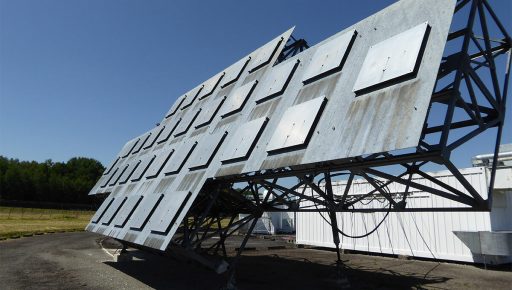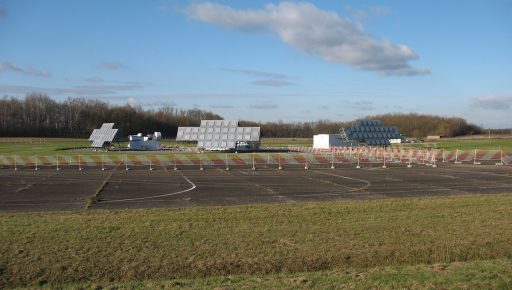
© DR
The French Defence Agency has launched a programme to upgrade its’ space surveillance system. A sensitive project that is scheduled to last for 5 years.
One of a kind in Europe, the GRAVES radar (large network adapted to the surveillance of Space) enables the French Air Force to track and catalogue space debris, as well as observation and listening satellites operating in low earth orbit, at an altitude of between 400 and 1,000 km.
“Just three radars of this type exist in the world, the two others belong to the US and Russia. The French system is divided into three sections: a transmission site in Dijon, a reception site on the Plateau d’Albion, and a computer centre at the Lyon-Mont-Verdun Air Force base where data is processed by COSMOS (operational centre for military surveillance of space objects),” says Olivier Grenesche, chairman of Degreane Horizon (VINCI Energies).
Commissioned in 2005, GRAVES is now due to be upgraded. The refurbishment works, launched by the French Defence Agency and scheduled to take place over a 5-year period, will extend the system’s service life until 2030.
Degreane Horizon, an expert in radar transmission and reception
Having been involved in the project to extend the number of transmission panels from two to four in 2003, Degreane Horizon is now responsible for refurbishing the Dijon transmission site. ONERA (the French aerospace research lab) is managing the refurbishment of the reception and data processing sites. “Our common goal is to address system obsolescence issues and to improve system performance,” specifies Olivier Grenesche.

© DR
As part of its Defence operations, Degreane Horizon specialises in radar transmission and reception, its expertise ranging from very weak signals to outputs of more than 50 kVA and from very low frequencies to frequencies of up to 5 GHz.
The company is in charge of refurbishing the transmitter racks, developing transmission rack management, and upgrading the fire safety, air conditioning, and backup power systems. The overall aim is to bring the site’s four shelters (technical buildings) to the same levels.
Mini, or even micro-satellites
“We will be installing a vast amount of equipment, which is a challenge. We must ensure that, at the very least, we maintain the previous performance levels,” adds Olivier Grenesche. “The four shelters on the transmission site will therefore be refurbished one at a time, helping to limit downtime for the installations, which will of course remain operational.”
This objective aligns with others: “We are able to detect satellites larger than a metre in size. A possible improvement could be to spot mini-satellites (under 500 kg), or even micro-satellites (under 150 kg),” he concludes.
20/03/2017


